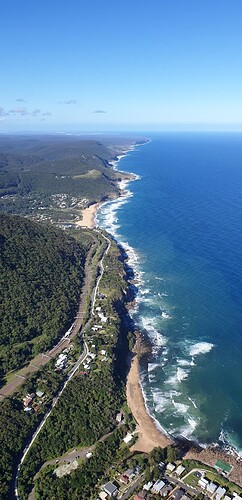I am going to probably ruffle some feathers on this topic…however, i do this because i too am very concerned about climate change and extinction and i care deeply about the environment.
Sometimes i think that we must shock others and bring to the surface some very robust feelings on these topics as it forces individuals to make a stand one way or the other.
I think this is a topic which causes one to seriously consider ones philosophical world view and the implications of choosing one that has considerable inconsistences…in this case the likes of Naturalism, Uniformatarianism and/or associated variants! Even YEC Christians would do well to seriously consider the idea that God doesnt demand of us that we protect all creation and not damage or pollute the environment!
Just to ensure that those on this forum understand i am genuine in my caring…i post a photo of some friends of mine who i havent seen in 3 years (this is my wifes rental property about 1000km away from where we have lived for the last 3 years.)
I hand feed these guys and their friends every day.
ok…so with the above caveat:
As a YEC, i find it rather suprising that those who susbscribe to evolutionism worry at all about climate change.
Why would an evolutionist even be worried? Its been happening for millions of years and is part of the natural order of things. Mankind is still a part of nature despite his pillaging of its resources. The earth will figure it out wont it?
Below is why i make the above statement:
More than 99% of all species that ever lived on Earth, amounting to over five billion species,[1] are estimated to have died out.[2][3][4][5] It is estimated that there are currently around 8.7 million species of eukaryote globally,[6] and possibly many times more if microorganisms, like bacteria, are included.[7] Notable extinct animal species include non-avian dinosaurs, saber-toothed cats, dodos, mammoths, ground sloths, thylacines, trilobites, and golden toads.
Through evolution, species arise through the process of speciation—where new varieties of organisms arise and thrive when they are able to find and exploit an ecological niche—and species become extinct when they are no longer able to survive in changing conditions or against superior competition. The relationship between animals and their ecological niches has been firmly established.[8] A typical species becomes extinct within 10 million years of its first appearance,[5] although some species, called living fossils, survive with little to no morphological change for hundreds of millions of years.
As one can find from the above reference in wikipedia, according to the naturalistic world view, a stong case can be made for not even worrying about climate change.
Also, i know that Christians have been blamed for a similar error in that they supposedly claimed that God is going to destroy and remake this corrupt sinful world so who cares!
Now i want to finish my post by stating again…
I am a climate change convert. I love nature, i value all of what i see around and i came to this conclusion as a result of flying paragliders…seeing nature from just above the treetops is one of the most wonderful thing i have ever done and I have been truly humbled by the experiences.
Below is an image i took I think it was just before COVID while flying my paraglider North of Wollongong Ausralia. It is looking at Bald Hill, the world famous Stanwell Park paraglinding site (the clearing above the small beach in the upper portion of the image)

